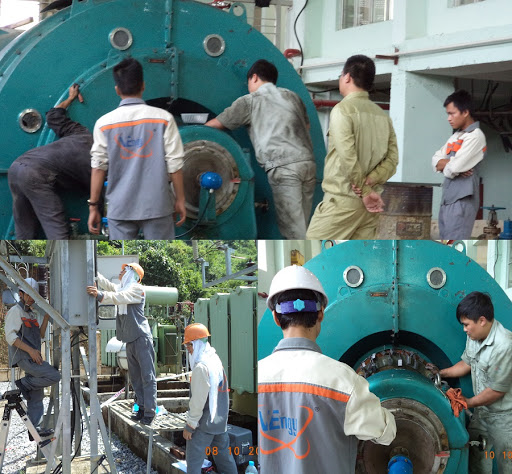Regulations on Minimum Skills for the Mechanical Equipment Installation Industry at College Level
Recently, the Ministry of Labor, Invalids and Social Affairs (BLDTBXH) has issued Circular 47/2018/TT-BLDTBXH regulating the minimum amount of knowledge and competency requirements that learners must achieve after graduating from intermediate and college levels in technical mechanics fields.

Minimum Skill Requirements for Mechanical Equipment Installation at the College Level - Illustrative Image
According to the regulations on minimum knowledge volume, competency requirements that learners must achieve after graduating from intermediate and college levels in the field of mechanical equipment installation, issued along with Circular 47/2018/TT-BLDTBXH, the minimum skills that learners must achieve after graduating from the college level in the field of mechanical equipment installation are as follows:
- Apply safety standards content in the industrial environment.
- Proficiently read the contents and information represented on detailed drawings and assembly drawings.
- Apply electrical engineering knowledge in assembling simple electrical circuit models, connecting the electrical system equipped on metal cutting machines.
- Calculate parameters related to the cutting process on machine tools such as spindle rotation speed, inclination angle, cutting angle, and mechanical joint parameters.
- Calculate parameters related to production costs such as material costs, wages, and cutting tool costs.
- Distinguish between metals and alloys, steel and cast iron, non-ferrous metals and their alloys.
- Organize and execute heat treatment and chemical heat treatment of steel as required.
- Inspect mechanical properties indicators of materials such as tensile strength, bending strength, hardness, and impact toughness of steel materials.
- Identify forms of damage and corrective measures for mechanical drive systems and basic machine parts, and propose corrective measures.
- Apply mechanical processing methods using hand tools on actual products to meet technical requirements.
- Proficiently consult tolerance tables, record and read tolerance values for sizes, shapes, and geometric tolerances of mechanical parts on manufacturing drawings and assembly drawings.
- Correctly use basic measurement tools in mechanics such as leaf gauges, tape measures, calipers, micrometers, and thread profile gauges.
- Measure electrical quantities as required by the job.
- Install simple motor control circuits applied to metal cutting machines.
- Assemble, disassemble, and maintain machine part assemblies such as mechanical drive systems and basic machine parts.
- Calculate and select lifting ropes, hooks, signaling, hanging items; use simple lifting equipment such as jacks, winches, chain blocks, pulleys to lift items, operate workshop cranes.
- Develop plans and organize work at the workplace.
- Mark, cut, grind, and assemble using welding methods metal structures into simple mechanical part assemblies and mechanical jigs to support installation processes from sheet and shaped steel, such as fabricating pads to move mechanical structures.
- Install conveyor frames, rollers, drums, drive units, belts, etc., and test the conveyor system operation.
- Install machine frames, hopper systems, grinding systems, feed systems, material classification systems in fuel grinding machines.
- Install suction hoppers, supports, filtration systems, vacuum systems, direction change systems, and test the ventilation system operation.
- Install mechanical processing machines such as lathes, milling machines, drilling machines, grinding machines, etc.
- Install pump systems in industries such as pumps, fire protection piping systems, fluid conduction pipes in high-rise buildings and ships, etc.
- Install industrial building frames.
- Develop installation plans, organize the workforce to perform tasks, manage, monitor, supervise the installation process progress, and resolve issues arising during the installation process.
- Apply basic information technology as required; exploit, process, and apply information technology in professional work related to the field.
- Use basic foreign languages, reach level 2/6 in the Vietnamese Language Competency Framework; apply foreign languages in the professional work related to the field.
See detailed regulations in Circular 47/2018/TT-BLDTBXH, effective from February 10, 2019.
Le Vy
- Directive on stabilizing the market in Vietnam at the end of 2024 and during the Lunar New Year in 2025
- Guidelines for determining the functions and scope of water source protection corridors in Vietnam from January 10, 2025
- Guidelines on the collection of information related to water sources requiring the establishment of water source protection corridor in Vietnam from January 10, 2025
- Mandatory functions of online banking application software in Vietnam from January 1, 2025
- Guidelines for classifying road motor vehicles by purpose of use in Vietnam from January 1, 2025
- Reorganization of administrative units in Phu Tho province from January 01, 2025
-

- Directive on stabilizing the market in Vietnam ...
- 15:18, 27/11/2024
-

- Guidelines for determining the functions and scope ...
- 09:05, 27/11/2024
-

- Guidelines on the collection of information related ...
- 09:02, 27/11/2024
-

- Mandatory functions of online banking application ...
- 08:30, 27/11/2024
-

- Guidelines for classifying road motor vehicles ...
- 08:00, 27/11/2024
 Article table of contents
Article table of contents
